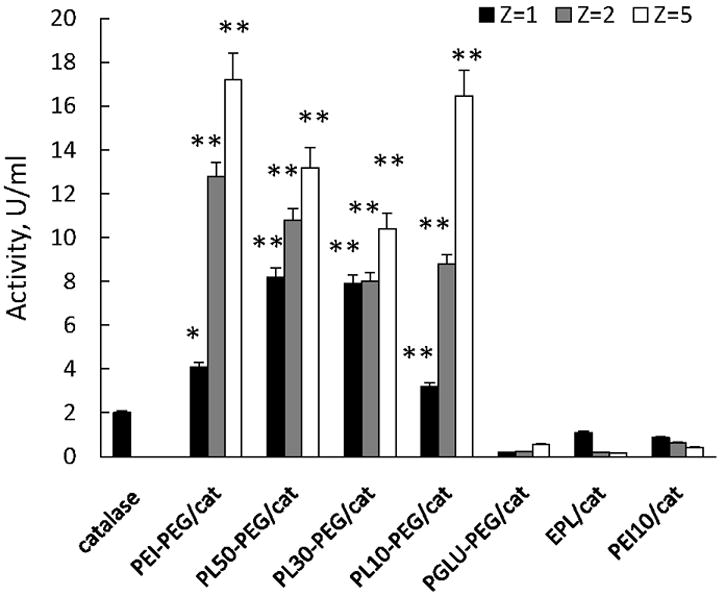Figure 8.

Preservation of enzymatic activity of catalase against degradation in BMM. “Naked” catalase (first bar) or different nanozymes (Z = 1, 2, or 5) were loaded into BMM, cells were washed and incubated with catalase-free media for two hours. Then, the media was collected, and the activity of catalase released from BMM was accounted by spectrophotometry as described in Figure 4 legend. All nanozymes with PEG corona comprising of positively-charged block copolymers showed efficient protection of catalase inside macrophages compared to catalase loaded alone. Increasing of the amount of the block copolymer in the BIC leaded to better protection of the enzyme. In contrast, nanozymes based on positively-charged monopolymers without PEG corona, or negatively-charged block copolymer did not protect catalase inside the host cells. Data represent means ± SEM (N = 4). Statistical significance of nanozyme activity compared to catalase alone is shown by asterisks: (*) p<0.05, (**) p<0.005.
